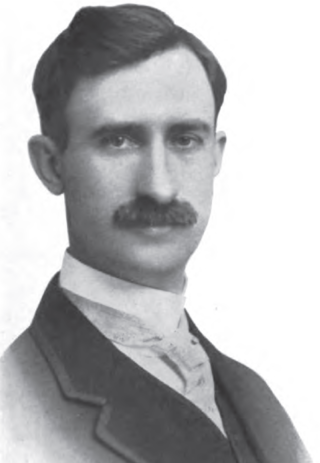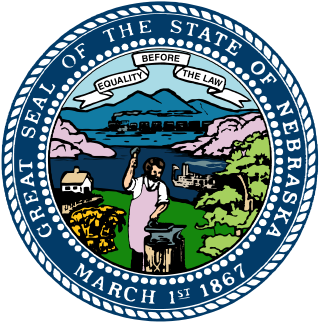| |||||||||||||||||
| |||||||||||||||||
 County results White: 50–60% 60–70% Cooper: 50–60% 60–70% | |||||||||||||||||
| |||||||||||||||||
The 1930 Ohio gubernatorial election was held on November 4, 1930. Democratic nominee George White defeated incumbent Republican Myers Y. Cooper with 52.80% of the vote.
| |||||||||||||||||
| |||||||||||||||||
 County results White: 50–60% 60–70% Cooper: 50–60% 60–70% | |||||||||||||||||
| |||||||||||||||||
| Elections in Ohio |
|---|
 |
The 1930 Ohio gubernatorial election was held on November 4, 1930. Democratic nominee George White defeated incumbent Republican Myers Y. Cooper with 52.80% of the vote.
| Party | Candidate | Votes | % | ±% | |
|---|---|---|---|---|---|
| Democratic | George White | 1,033,168 | 52.80% | ||
| Republican | Myers Y. Cooper (incumbent) | 923,538 | 47.20% | ||
| Majority | 109,630 | ||||
| Turnout | |||||
| Democratic gain from Republican | Swing | ||||

Tammany Hall, also known as the Society of St. Tammany, the Sons of St. Tammany, or the Columbian Order, was an American political organization founded in 1786 and incorporated on May 12, 1789, as the Tammany Society. It became the main local political machine of the Democratic Party and played a major role in controlling New York City and New York state politics. It helped immigrants, most notably the Irish, rise in American politics from the 1850s into the 1960s. Tammany usually controlled Democratic nominations and political patronage in Manhattan for over 100 years following the mayoral victory of Fernando Wood in 1854, and used its patronage resources to build a loyal, well-rewarded core of district and precinct leaders; after 1850, the vast majority were Irish Catholics due to mass immigration from Ireland during and after the Irish Famine of the late 1840s.

Myers Young Cooper was an American Republican politician and businessman from Ohio. Cooper was the 51st governor of Ohio.

The 2004 United States presidential election in Georgia took place on November 2, 2004. Voters chose 15 representatives, or electors to the Electoral College, who voted for president and vice president.

The 70th United States Congress was a meeting of the legislative branch of the United States federal government, consisting of the United States Senate and the United States House of Representatives. It met in Washington, D.C., from March 4, 1927, to March 4, 1929, during the last two years of Calvin Coolidge's presidency. The apportionment of seats in the House of Representatives was based on the 1910 United States census.

Francis John Myers was an American teacher, lawyer, and Democratic Party politician. He represented most of West Philadelphia and Southwest Philadelphia in the United States House of Representatives from 1939 to 1945 and represented Pennsylvania in the United States Senate for one term from 1945 to 1951. He was Senate Majority Whip from 1949 to 1951.

The 2006 congressional elections in Tennessee was held on November 7, 2006, to determine who will represent the state of Tennessee in the United States House of Representatives.

The 2008 congressional elections in Indiana were held on November 4, 2008, to determine who will represent the State of Indiana in the United States House of Representatives. Indiana has nine seats in the House, apportioned according to the 2000 United States census. Representatives are elected for two-year terms; those elected will serve in the 111th Congress from January 3, 2009, until January 3, 2011. The elections coincide with the 2008 U.S. presidential election.

The 1904 United States House of Representatives elections in South Carolina were held on November 8, 1904, to elect seven representatives Representatives for one two-year terms from the state of South Carolina. All five incumbents who ran were re-elected and the open seats in the 2nd congressional district and 6th congressional district were retained by the Democrats. The composition of the state delegation thus remained solely Democratic.

The 1908 United States House of Representatives elections in South Carolina were held on November 3, 1908, to select seven Representatives for two-year terms from the state of South Carolina. All seven incumbents were re-elected and the composition of the state delegation remained solely Democratic.

The 1906 United States House of Representatives elections in South Carolina were held on November 6, 1906, to select seven Representatives for two-year terms from the state of South Carolina. All seven incumbents were re-elected and the composition of the state delegation remained solely Democratic.

Edward Crawford Turner was a Republican lawyer in the U.S. state of Ohio who served two non consecutive terms of two years as Ohio Attorney General, and was later a justice of the Ohio Supreme Court 1940 until his death.

The 2016 United States presidential election in California was held on Tuesday, November 8, 2016, as part of the 2016 United States presidential election in which all 50 states plus the District of Columbia participated. California voters chose electors to represent them in the Electoral College via a popular vote, pitting the Republican Party's nominee, businessman Donald Trump, and running mate Indiana Governor Mike Pence against Democratic Party nominee, former Secretary of State Hillary Clinton, and her running mate Virginia Senator Tim Kaine. California had 55 electoral votes in the Electoral College, the most of any state.

The 1946 United States Senate special election in Kentucky was held on November 5, 1946, to complete the unexpired term of Senator Happy Chandler, who resigned to become Commissioner of Baseball. Interim Senator William A. Stanfill did not run for the full term. Republican John Sherman Cooper defeated Democratic former U.S. Representative John Y. Brown to complete the term.

The 1900 United States presidential election in Florida was held on November 6, 1900. Florida voters chose four representatives, or electors to the Electoral College, who voted for President and Vice-President.

The 1966 United States Senate election in Mississippi was held on November 8, 1966.

The 1932 Nebraska gubernatorial election was held on November 8, 1932, and featured incumbent Governor Charles W. Bryan, a Democrat, defeating Republican nominee, newspaper publisher and former state legislator Dwight Griswold, to win a third and final two-year, non-consecutive term in office.

The 1979 Kentucky gubernatorial election was held on November 6, 1979. Democratic nominee John Y. Brown Jr. defeated Republican nominee Louie Nunn with 59.41% of the vote.

The 1928 Ohio gubernatorial election was held on November 6, 1928. Republican nominee Myers Y. Cooper defeated Democratic nominee Martin L. Davey with 54.79% of the vote.

The 1926 Ohio gubernatorial election was held on November 2, 1926. Incumbent Democrat A. Victor Donahey defeated Republican nominee Myers Y. Cooper with 50.33% of the vote.

The 2020 Alaska Senate elections took place as part of the biennial 2020 United States elections. Voters in Alaska elected state senators in 11 of the state's 20 senate districts – the usual ten plus one special election. State senators serve four-year terms in the Alaska Senate, with half seats up for election every two years. Primary elections on August 18, 2020, determined which candidates appeared on the general election ballot on November 3, 2020.